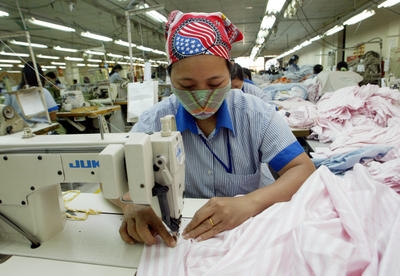Author: Suiwah Leung, ANU
With an estimated GDP growth of 5.3 per cent in 2009 and a forecasted growth rate by the ADB of 6.7 per cent for 2010, Vietnam has not only survived the GFC in better shape than countries of comparable size in Asia, but has joined the ranks of middle-income countries by having its per capita GDP in excess of USD 1,000. This is certainly a remarkable achievement in two decades of economic reforms. With the leadership setting its sights on having Vietnam develop into an industrialised market economy by 2020, there are expectations in some quarters that foreign investors will again find Vietnam a very attractive investment destination after Brazil, Russia, India and China (BRIC).

Vietnam is no stranger to foreign investors. During the last two decades, the country has had an average FDI/GDP ratio of 5.9 per cent; the highest among many ASEAN countries during their respective periods of rapid growth from the mid-1970s to mid-1990s. Yet it was not until 2006 that foreign investors were able to link Vietnam to the parts and components/assembly trade in electronics and IT equipment (the so-called production networks of East Asia, and arguably the most dynamic aspect of manufacturing trade in the late 20th and early 21st centuries). This was a result, firstly, of two new laws in 2006 and Vietnam’s accession to the WTO in 2007 which made it possible for foreign investors to purchase more than 30 per cent of a Vietnamese enterprise, thus enabling foreign firms to exercise the coordination necessary for production network trade. Secondly, the costs of doing business in addition to labour costs (for example, transport, customs clearance, telephony, electricity) were lowered significantly in 2006 and became competitive with similar costs in the region. These two developments made it possible for Vietnam to join the first ‘rung’ of this global supply chain, providing another example that domestic reforms were needed for the country to reap the benefits of international integration.
In the short term to have a resurgence of FDI which would take advantage of the production network trade, the market needs to be more confident in the government’s ability to maintain macroeconomic stability. The recently announced prime ministerial initiative to target the growth of the IT sector would certainly add to the optimism of investors. On the other hand, recently reported intentions of the government to use price controls to fight inflation is a negative. In the medium term, in order to progress up the value chain, Vietnam’s domestic private sector would need to be significantly more developed and given substantially better access to credit.
After two decades of reforms, the very large state-owned enterprises (conglomerates called ‘General Corporations’) still constitute a quarter share of Vietnamese industry and command over half of the country’s investible funds. The move by these General Corporations into real estate and finance in 2007/8 provided another channel of funding to these corporations while destabilising the macroeconomy. The recent failure of Vinashin, the large state-owned shipbuilding conglomerate, is having reverberations at the highest political levels. And yet, as the country is about to implement its ninth socio-economic development plan in 2011, there seems little appetite to address directly the role of the State in the economy vis-à-vis the private sector.
Given Vietnam has experienced significant macroeconomic turbulence in the past three years, with current account deficits hitting the ‘safety threshold’ of 10 per cent of GDP, the dong under attack, and inflationary pressures expected to re-emerge with resumption of rapid growth; the building of strong macroeconomic institutions (central bank, ministry of finance, ministry of planning and investment) is an important and necessary goal in the medium term future. In due course, institution-building could spread to other areas of the civil service. A strong set of public institutions could act as a bulwark against politically-driven and wasteful public spending, leaving more room for social spending on health and education – essential ingredients supporting a dynamic private sector. In time, this would help to redefine the catch phrase, ‘A market economy with socialist orientation’, that is more in consonance with an industrialised market economy. With this framework in place, Vietnam has the potential to sustain rapid growth in the coming decade, and continue to be regarded favourably in the eyes of international investors.
Suiwah Leung is Adjunct Associate Professor of Economics at ANU. She consults regularly with AusAID, the Australian Department of Foreign Affairs and Trade, the Australian Centre for International Agricultural Research, the UN Development Program, and the Vietnamese government on macroeconomic and economic development issues.




























